
Murphy Beds Are Having a Moment. How You Can Incorporate the Design Hack
Disappearing wall beds that fold up to reveal spare square footage when they’re not in use are one of the all-time small-space design hacks. And they’re having a moment.
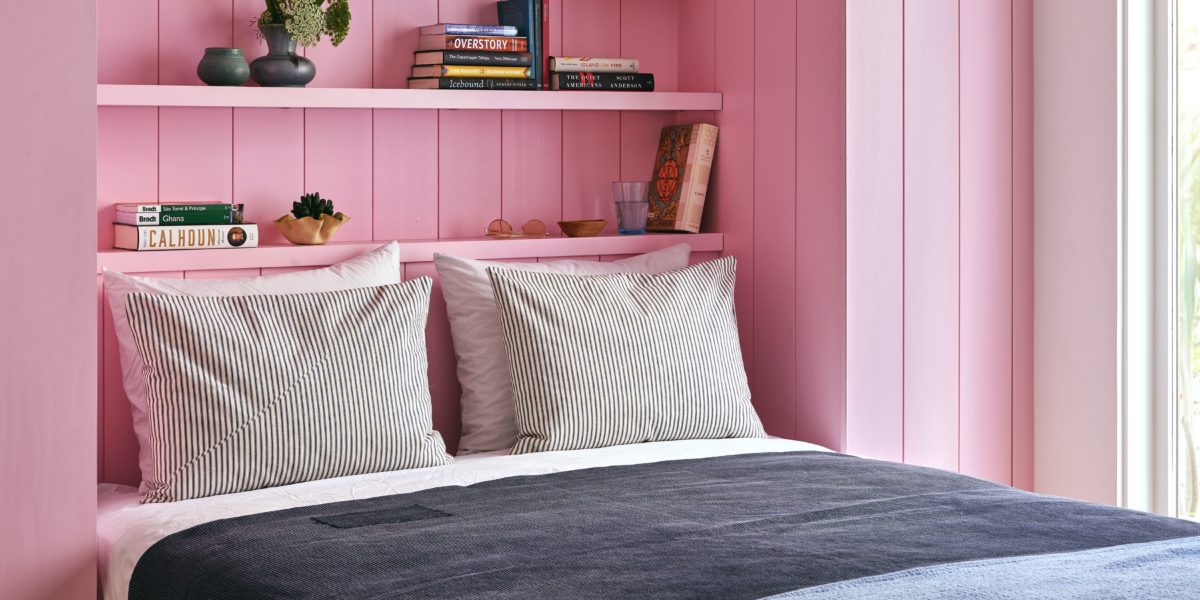
Carter Design/Trevor Tondo
People cannot multitask. You may have yourself fooled into thinking that you’re a high-functioning juggler of many duties at once, but your cerebral cortex can only handle one focus at a time. Rooms, on the other hand, can be and do many things at once. And we’re constantly amazed by the clever ways people push a small footprint house to its capacity, using high-functioning storage hacks, versatile furniture, and clever built-ins like wall beds to get the most of their living spaces.
Interior designer Natalie Papier designed this sliver of a studio apartment with bold orange stripes on the wall, and furnished it exclusively with items from overstock.com for Apartment Therapy.
A few years ago, when I dove into a full renovation of our garage and attached guest room (which was essentially a shed that had been drywalled), I was dead set on creating a multipurpose space that would contort into whatever we needed it to be. It had to be a guest room, a workout space big enough for a couple of yoga mats and weights, a teen hangout area and sleepover spot, and a party room when we had guests in the backyard. And the one design element that made it all possible was a wall bed, aka Murphy bed, that folds away when it isn’t needed and turns virtually any room into a bedroom in under a minute. Unlike sofa beds, which can require a bit of wrestling to unfold, well-design wall beds are intended to be easy enough to use every day. And there’s an abracadabra quality of pulling a bed out nowhere.
Our teen hangout zone/makeshift home gym/backyard party pavilion, photographed for Hunker.com, becomes a guest room when we pull down the wall bed (built with custom plywood millwork).
“Murphy bed” is a brand name, like Band-Aid or Xerox, that has become synonymous with the product itself. There’s a legend around its official invention in San Francisco in 1900 that involves a man, William Lawrence Murphy, who was in love with an opera singer and wanted to invite her to his one-room apartment, back when it was considered crass to invite a single woman into a gentleman’s sleeping quarters. For propriety’s sake, he tucked a mattress on a metal frame and folded it into his closet. While folding beds were popular long before that time—some were suspended with ropes and pulleys to be retracted when they weren’t in use—Murphy made the disappearing bed a thing. By the 1920s, they were hugely popular in dense urban areas known for expensive real estate and small dwellings. They’re still made and manufactured under the Murphy brand name today.
Sofa beds may have stolen some of their thunder over the years, but the folding wall bed—in a vertical or horizontal layout—can still be a surprise and a delight in an apartment or room where even a fold-out couch takes up too much space. Wall beds can be ordered as piece of furniture (in most cases assembly is required) from Costco, Hayneedle, and California Closets, or from specialists like Lori Wall Beds. Kits, including all the hardware to do it yourself, are available on Amazon.
Here are our favorite ways to make a hidden bed stand out…in a good way.
Frame It with Shelves
The owners of the pool house, pictured here, told the design team at Studio Life/Style that they wanted it to function like a “Swiss Army knife,” easily transforming with a few simple steps. They put the coffee table and sofa on casters, which make them easy to roll out of the way to create a party space. And the built-in shelving that surrounds the bed frame helps to integrate it into the interior architecture.

Thomas J. Story
When the bed is pulled down, sheets and blankets come out of built-in storage, and the shelving functions as nightstands.
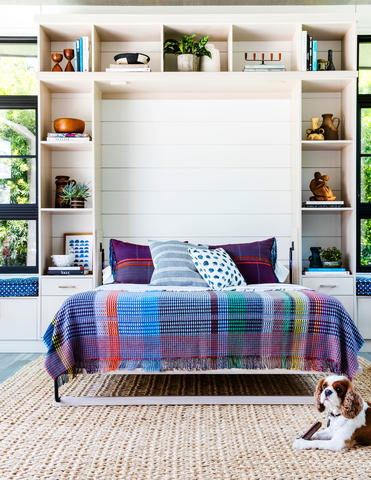
Thomas J. Story
Attach a Pull-Down Desk
A few of the Italian-designed wall beds from Resource Furniture have a mechanism that allow them to be rotated. On one side, there’s everything one might need for a home office—including an optional pull down desk. Flip it around to reveal a wall bed. Models with a collapsible dining table are available as well.
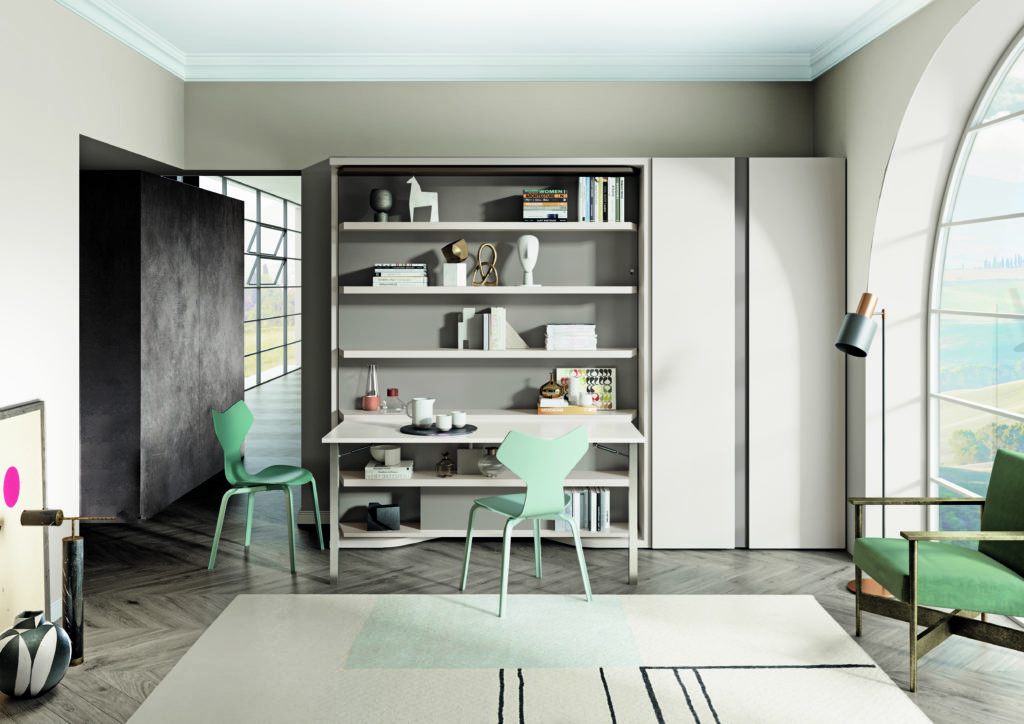
Courtesy of Resource Furniture
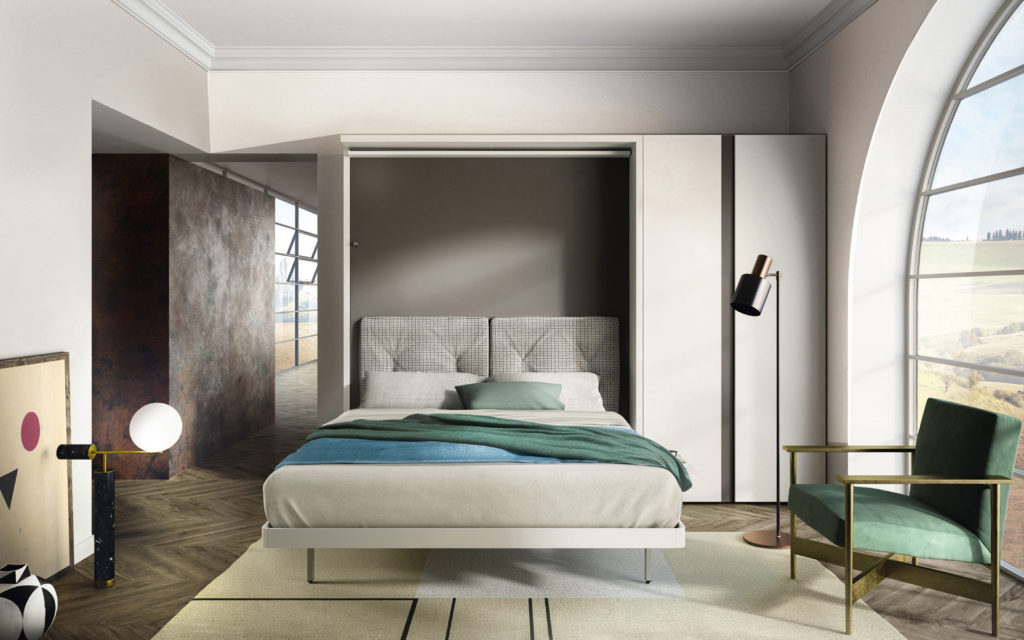
Courtesy of Resource Furniture
Swing Big with Color
“I’ve been asked to install a lot of Murphy beds lately,” says Genevieve Carter of Carter Design. “And they’re all in these dual-function rooms, like guest rooms that have been repurposed into offices. I also hear from clients that they want a fun background for Zoom calls.”
Carter and her partner Cy, who is also her husband, designed this wall bed with hidden shelving from a custom kit in a guest room/office at a client’s Venice Craftsman house. By painting the whole wall bubble-gum pink, they created a Zoom background for the ages, too, and achieved two goals at once.
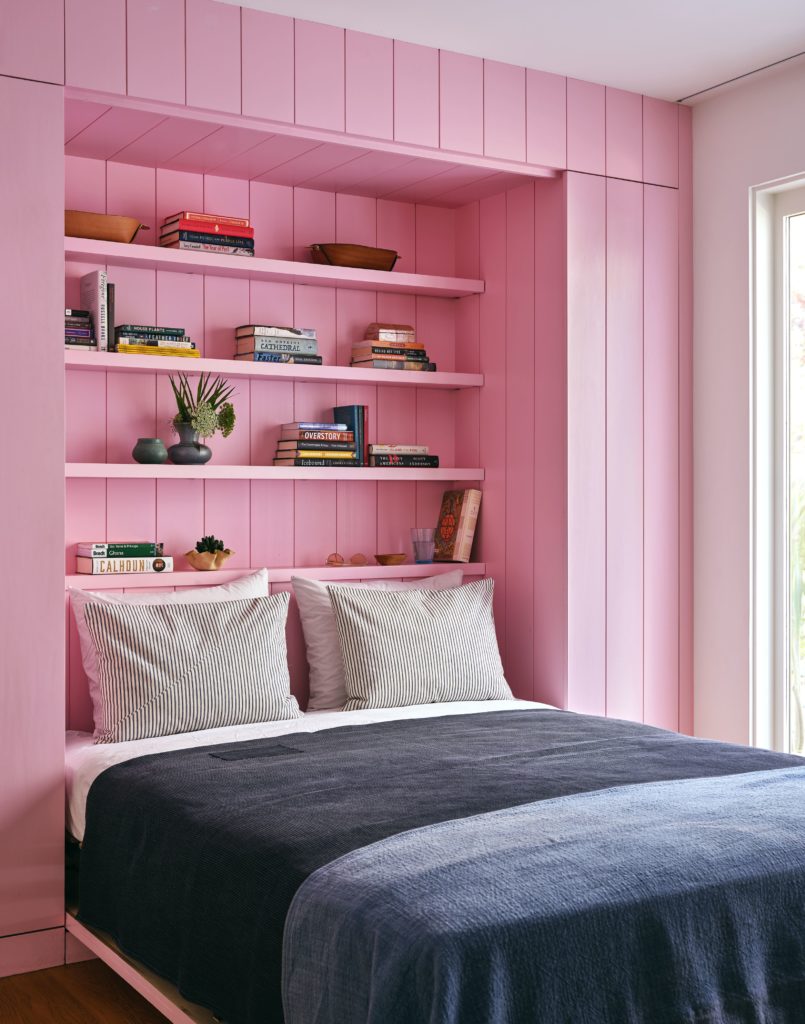
Carter Design/Trevor Tondo
